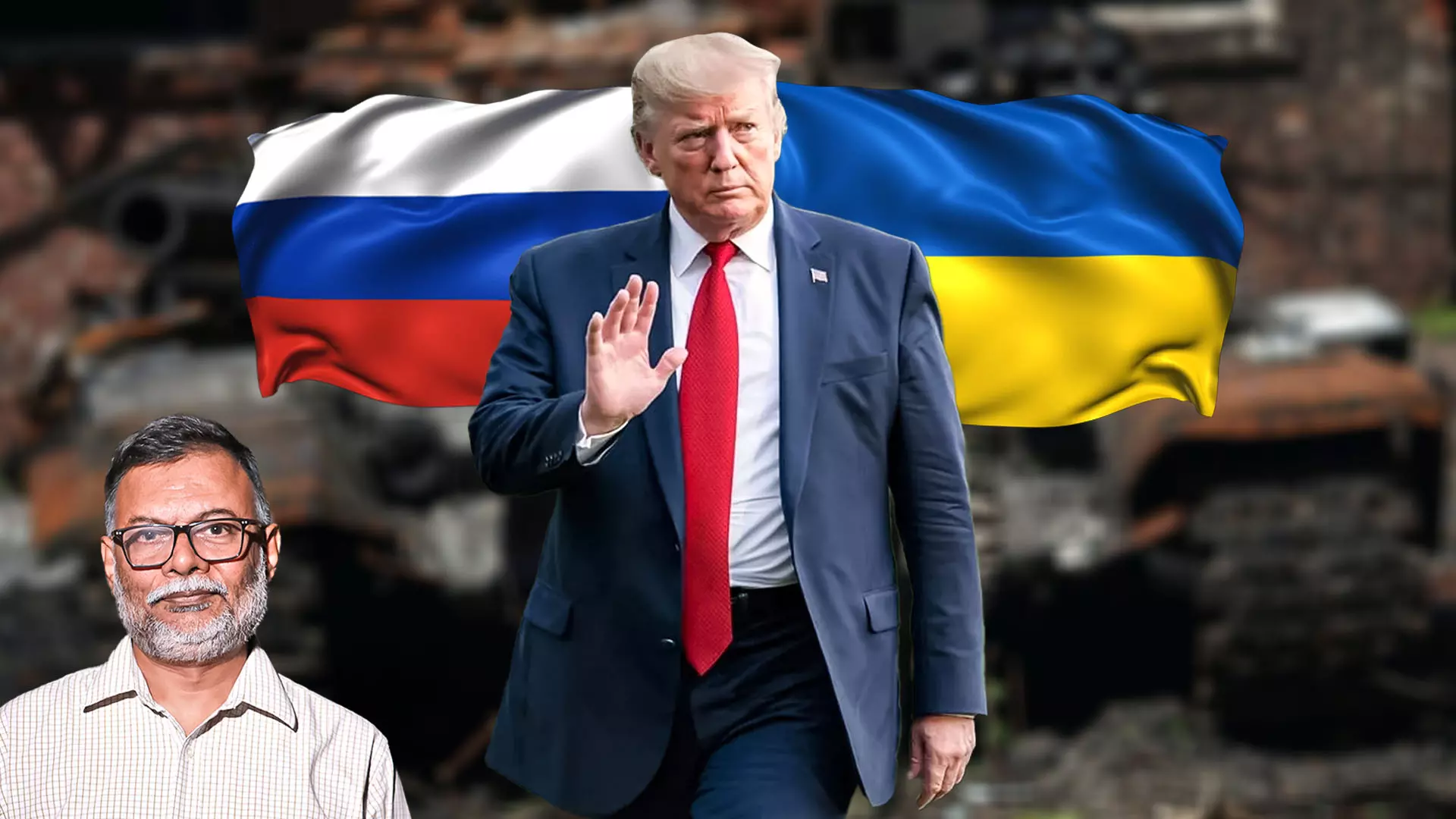
Trump-brokered Russia–Ukraine peace plan nears finish line, but big hurdles remain
Russia - Ukraine war grinding to a halt?
Trump is pushing a Russia-Ukraine peace deal that could freeze borders, cap Ukraine’s army and block NATO entry. Is this peace or a win for Moscow?

A draft peace agreement between Russia and Ukraine is reportedly in its final stages, driven largely by US President Donald Trump’s pressure on both sides. In this conversation, KS Dakshina Murthy, Consulting Editor and expert on international affairs, explains how realistic the deal is, what obstacles remain, and why Trump is pushing so hard for a settlement.
How realistic are the chances of peace between Ukraine and Russia?
The chances of a peace deal are surprisingly realistic. After nearly four years of war, there is a sense of fatigue on both sides. Neither Russia nor Ukraine is making major gains, and the conflict appears to have reached a stalemate.
Ukraine, especially, seems to be on the receiving end, and both countries understand that the war may continue indefinitely if there is no intervention.
The conflict has also disrupted global economic and political systems. With international pressure mounting, there is a growing feeling that “enough is enough.” The U.S. is heavily invested in pushing for a settlement, and President Trump is using this moment to force negotiations.
Given these conditions, a peace deal looks realistic. How fair the agreement will be is another question entirely.
What obstacles must be overcome for a peace deal to materialise?
There are three significant obstacles. The first is the issue of eastern Ukraine — from Crimea up to the Donbas. About 20% of Ukrainian land is currently under Russian occupation. The US is pressuring President Volodymyr Zelensky to formally concede this territory to Russia. This is extremely sensitive and could provoke a nationalist backlash within Ukraine.
Also Read: Hasina’s death sentence pushes Bangladesh to brink of civil war
Russia, on its part, refuses to give up the territories it has taken, viewing them as essential security buffers against NATO.
The second obstacle concerns Ukraine’s military size. Russia insists Ukraine must limit its troops to no more than 600,000. This directly affects Ukraine’s sovereignty, and Kyiv is reluctant to agree. Russia sees the limitation as a long-term security guarantee.
The third obstacle is NATO membership. Russia demands that Ukraine never join NATO—“forever”. Ukraine and NATO allies oppose this, but Trump is pushing for Zelensky to accept it. If the agreement goes through as proposed, Ukraine could be permanently barred from NATO membership.
How are NATO nations responding to these proposals?
NATO allies — especially the UK, Germany, and France — are unhappy with Trump’s approach. They strongly oppose any deal that appears to reward Russia, the country that initiated the invasion.
Europe does not want Ukraine to concede 20% of its territory or to give up future NATO membership. European nations believe such concessions would set a dangerous precedent.
To soften the rigid terms, Europe is suggesting alternatives such as restricting NATO membership for a limited period instead of a permanent ban. They also oppose capping Ukraine’s troop strength. Europe is trying to influence the negotiations, even though Trump has largely excluded the EU from direct involvement. This mirrors the early stages of the war, when European leaders — particularly former UK Prime Minister Boris Johnson — discouraged Ukraine from entering peace talks with Russia.
Why is Trump so keen on finalising this peace deal?
Trump wants to project himself as a global peacemaker. He has repeatedly claimed credit for ending multiple conflicts, including the India–Pakistan confrontation after the Pahalgam attack and the Israeli assault on Gaza. He hoped these actions would bolster his chances of receiving the Nobel Peace Prize, which he did not.
Also Read: Why Donald Trump could still deserve a Nobel Peace Prize
During his presidential campaign, he publicly vowed to end the Russia–Ukraine war “in one day”. With the U.S. spending billions on the conflict, Trump wants to end what he sees as an expensive and unproductive war.
The U.S. is also dealing with internal economic pressures — rising prices and growing domestic dissatisfaction. Trump’s approval ratings are slipping, adding urgency to his push to conclude the war and showcase a major diplomatic victory.
The content above has been transcribed from video using a fine-tuned AI model. To ensure accuracy, quality, and editorial integrity, we employ a Human-In-The-Loop (HITL) process. While AI assists in creating the initial draft, our experienced editorial team carefully reviews, edits, and refines the content before publication. At The Federal, we combine the efficiency of AI with the expertise of human editors to deliver reliable and insightful journalism.

